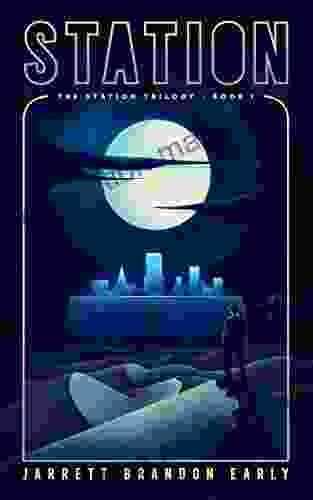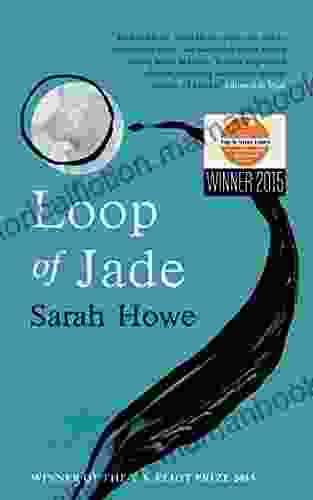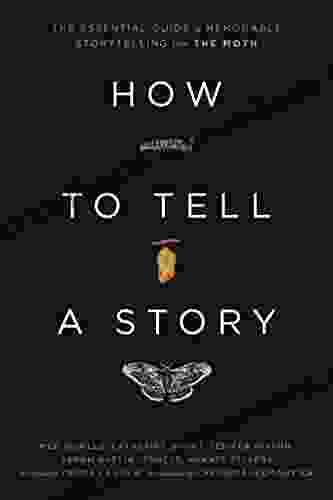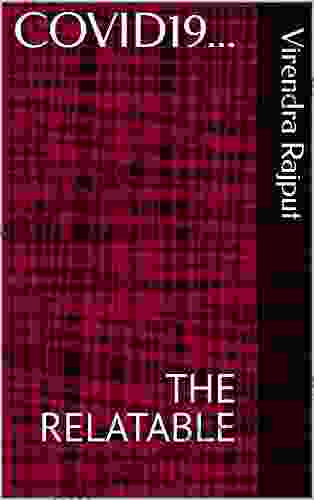The Art of Storytelling: A Comprehensive Guide to Captivating Your Audience

Storytelling is an ancient and powerful art form that has the ability to entertain, educate, and inspire. Whether you're sharing a personal anecdote, crafting a fictional narrative, or presenting a business proposal, the ability to tell a compelling story is essential for connecting with your audience and leaving a lasting impression.
In this comprehensive guide, we'll explore the elements of effective storytelling and provide practical tips and techniques to help you craft narratives that captivate your audience.
4.8 out of 5
| Language | : | English |
| File size | : | 8888 KB |
| Text-to-Speech | : | Enabled |
| Screen Reader | : | Supported |
| Enhanced typesetting | : | Enabled |
| Word Wise | : | Enabled |
| Print length | : | 332 pages |
1. Choose the Right Topic
The first step in telling a great story is choosing the right topic. Consider your audience and what they're interested in learning or hearing about. A topic that is relevant to your audience's lives or experiences will be more likely to resonate with them.
If you're not sure what topic to choose, try brainstorming ideas based on your own experiences, interests, or current events. You can also ask friends, family, or colleagues for their suggestions.
2. Create a Captivating
The of your story is crucial for grabbing your audience's attention and setting the tone for the rest of the narrative. Start with a hook that immediately draws your audience in, such as a surprising fact, a thought-provoking question, or a vivid image.
Once you have your hook, provide some background information to introduce your topic and establish the context for your story. Be brief and to the point, and only include information that is essential to understanding the narrative.
3. Develop Your Characters
If your story involves characters, take the time to develop them fully. Give them clear motivations, goals, and flaws. The more relatable and well-developed your characters are, the more invested your audience will be in their journey.
When describing your characters, use vivid language and sensory details to bring them to life. Appeal to your audience's senses by describing their appearance, voice, mannerisms, and emotions.
4. Craft a Compelling Plot
The plot of your story is the sequence of events that unfolds and drives the narrative forward. A well-crafted plot will keep your audience engaged and guessing what will happen next.
There are many different types of plots, but all good plots share a few common elements:
- A clear conflict: The main character is faced with a challenge or obstacle that they must overcome.
- Rising action: The conflict intensifies and the stakes get higher.
- Climax: The turning point of the story, where the conflict reaches its peak.
- Falling action: The conflict is resolved and the story begins to wind down.
- Resolution: The story ends with a sense of closure, either happy or sad.
5. Use Vivid Language
The language you use in your story can have a profound impact on your audience's experience. Use vivid and descriptive language to create a sensory experience for your readers or listeners. Appeal to their senses of sight, sound, smell, taste, and touch.
When describing a scene, use specific and concrete details to bring it to life. Instead of saying "The room was dark," try saying "The room was bathed in the dim, flickering light of a single candle."
6. Engage Your Audience
Throughout your story, find ways to engage your audience and keep them invested in the narrative. Ask rhetorical questions, use humor, and provide opportunities for your audience to interact with the story.
For example, you could ask your audience to imagine themselves in the main character's shoes or to share their thoughts on a particular event in the story.
7. Practice and Revise
Like any other skill, storytelling takes practice. The more you practice, the better you'll become at crafting compelling narratives. Share your stories with others and get feedback. Be open to constructive criticism and use it to improve your storytelling skills.
Remember, storytelling is an iterative process. Don't be afraid to revise and edit your stories until they're the best they can be.
Storytelling is a powerful tool that can be used to entertain, educate, and inspire. By following the tips and techniques outlined in this guide, you can craft compelling narratives that will captivate your audience and leave a lasting impression.
So go forth and tell your stories! The world is waiting to hear them.
4.8 out of 5
| Language | : | English |
| File size | : | 8888 KB |
| Text-to-Speech | : | Enabled |
| Screen Reader | : | Supported |
| Enhanced typesetting | : | Enabled |
| Word Wise | : | Enabled |
| Print length | : | 332 pages |
Do you want to contribute by writing guest posts on this blog?
Please contact us and send us a resume of previous articles that you have written.
 Top Book
Top Book Novel
Novel Fiction
Fiction Nonfiction
Nonfiction Literature
Literature Paperback
Paperback Hardcover
Hardcover E-book
E-book Audiobook
Audiobook Bestseller
Bestseller Classic
Classic Mystery
Mystery Thriller
Thriller Romance
Romance Fantasy
Fantasy Science Fiction
Science Fiction Biography
Biography Memoir
Memoir Autobiography
Autobiography Poetry
Poetry Drama
Drama Historical Fiction
Historical Fiction Self-help
Self-help Young Adult
Young Adult Childrens Books
Childrens Books Graphic Novel
Graphic Novel Anthology
Anthology Series
Series Encyclopedia
Encyclopedia Reference
Reference Guidebook
Guidebook Textbook
Textbook Workbook
Workbook Journal
Journal Diary
Diary Manuscript
Manuscript Folio
Folio Pulp Fiction
Pulp Fiction Short Stories
Short Stories Fairy Tales
Fairy Tales Fables
Fables Mythology
Mythology Philosophy
Philosophy Religion
Religion Spirituality
Spirituality Essays
Essays Critique
Critique Commentary
Commentary Glossary
Glossary Bibliography
Bibliography Index
Index Table of Contents
Table of Contents Preface
Preface Introduction
Introduction Foreword
Foreword Afterword
Afterword Appendices
Appendices Annotations
Annotations Footnotes
Footnotes Epilogue
Epilogue Prologue
Prologue Raymona Brown
Raymona Brown Michael A Arnzen
Michael A Arnzen C H S Leite
C H S Leite Michael Yates Jr
Michael Yates Jr Amy Gajda
Amy Gajda Theophilus Monroe
Theophilus Monroe Johann Wolfgang Von Goethe
Johann Wolfgang Von Goethe Patricia Romanowski Bashe
Patricia Romanowski Bashe Muniya S Khanna
Muniya S Khanna Jj Smith
Jj Smith Suzanna Lynn
Suzanna Lynn Charity Grant
Charity Grant Rachel Janney
Rachel Janney Michael Abraham
Michael Abraham Takeshi Hamashita
Takeshi Hamashita Pascale Petit
Pascale Petit Brad Berger
Brad Berger Rosanna Casper
Rosanna Casper John M Barry
John M Barry Barry Adkins
Barry Adkins
Light bulbAdvertise smarter! Our strategic ad space ensures maximum exposure. Reserve your spot today!

 Ismael HayesWhen the Darkness Grabs You: Unleashing Your Inner Potential to Conquer Your...
Ismael HayesWhen the Darkness Grabs You: Unleashing Your Inner Potential to Conquer Your...
 Michael SimmonsHow to Make Fox and Raccoon Keychains with Tennis Ball Video Tutorial Beading
Michael SimmonsHow to Make Fox and Raccoon Keychains with Tennis Ball Video Tutorial Beading
 Anton ChekhovMemoir of Loss, Courage, and the Girl Saved by Bees: An Inspiring Tale of...
Anton ChekhovMemoir of Loss, Courage, and the Girl Saved by Bees: An Inspiring Tale of...
 D'Angelo CarterThe Station Trilogy: A Captivating Journey Through Intrigue, Space, and the...
D'Angelo CarterThe Station Trilogy: A Captivating Journey Through Intrigue, Space, and the... Richard AdamsFollow ·13.2k
Richard AdamsFollow ·13.2k Ralph EllisonFollow ·3.1k
Ralph EllisonFollow ·3.1k George HayesFollow ·11.4k
George HayesFollow ·11.4k Todd TurnerFollow ·10.9k
Todd TurnerFollow ·10.9k Zachary CoxFollow ·7.6k
Zachary CoxFollow ·7.6k Oscar BellFollow ·14.7k
Oscar BellFollow ·14.7k Camden MitchellFollow ·5.4k
Camden MitchellFollow ·5.4k Preston SimmonsFollow ·11.3k
Preston SimmonsFollow ·11.3k

 Allen Ginsberg
Allen GinsbergUnlocking Financial Peace with Low Risk Investing: A...
In the world of investing, it is often said...

 Eddie Powell
Eddie PowellLoop of Jade: An Exploration of Grief, Memory, and the...
Sarah Howe's...

 Zachary Cox
Zachary CoxHealth Benefits in Retirement: Navigating the Maze of...
Retirement...
4.8 out of 5
| Language | : | English |
| File size | : | 8888 KB |
| Text-to-Speech | : | Enabled |
| Screen Reader | : | Supported |
| Enhanced typesetting | : | Enabled |
| Word Wise | : | Enabled |
| Print length | : | 332 pages |










